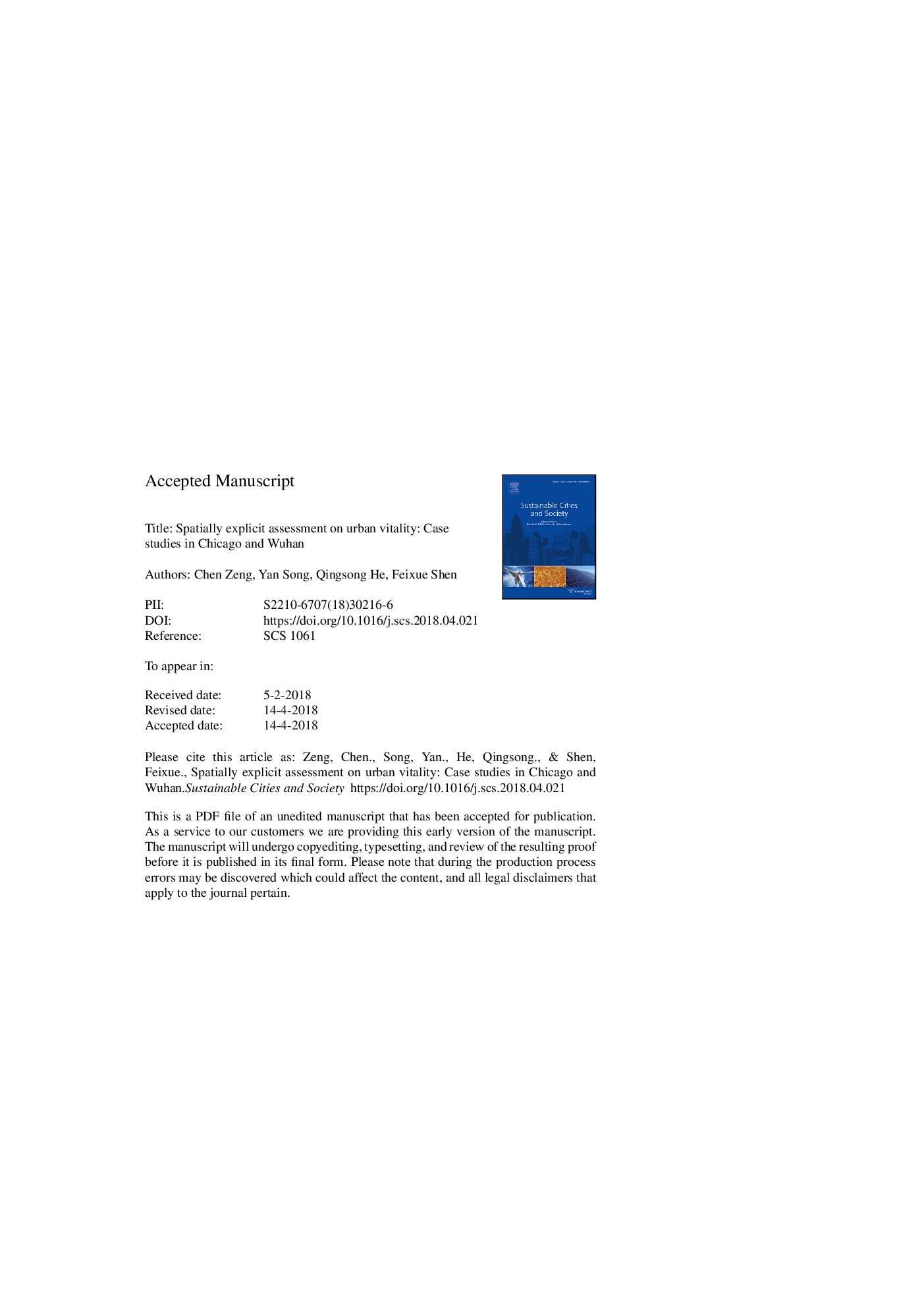| Article ID | Journal | Published Year | Pages | File Type |
|---|---|---|---|---|
| 6775093 | Sustainable Cities and Society | 2018 | 16 Pages |
Abstract
This study focused on urban vitality assessment to address the increasing decentralized urban pattern and take precautions to urban decline. Using Chicago in the US and Wuhan in China as examples, urban vitality was decomposed into four aspects: density, livability, accessibility, and diversity. Spatially explicit indices were calculated, and the spatial pattern was analyzed in a big data environment. The ultimate urban vitality assessment was carried out by applying a spatial technique for order preference by similarity to ideal solution to rank. The following were revealed. (1) Chicago is superior in accessibility and diversity, whereas there are high values in density and livability in Wuhan. (2) Chicago has a grid-based urban pattern and is highly decentralized in urban vitality, and the spatial division of Wuhan is considerably irregular with a ring-like spatial distribution of urban vitality. (3) Block groups or community neighborhoods around the scenic spots or with large areas are highly likely to be influenced by their neighborhoods in Chicago and Wuhan. The indicator system on urban vitality assessment can be adjusted and extended in an all-around manner and can become profoundly robust and dynamic with the consideration of diversified spatial interactions.
Related Topics
Physical Sciences and Engineering
Energy
Renewable Energy, Sustainability and the Environment
Authors
Chen Zeng, Yan Song, Qingsong He, Feixue Shen,
